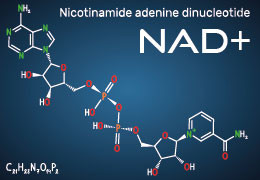Age-related visual impairment is a prevalent condition that affects millions of people worldwide. With the aging...
Treatment of Age-Related Visual Impairment with SS31 Peptide Targeting Mitochondria
Introduction:
Age-related visual impairment is a prevalent condition that affects millions of people worldwide. With the aging population on the rise, finding effective treatments for age-related visual impairments has become a pressing challenge. Recent research has shown promising results in the use of the SS31 peptide, a mitochondria-targeting compound, for the treatment of age-related visual impairment. In this article, we will explore the potential of SS31 peptide as a therapeutic intervention and its impact on mitochondrial function in the context of age-related visual impairments.
Understanding Age-Related Visual Impairment:
Age-related visual impairment encompasses a range of conditions, including age-related macular degeneration (AMD), cataracts, and glaucoma, which can lead to vision loss and significantly impact the quality of life in older adults. Mitochondrial dysfunction has been identified as a contributing factor in the development and progression of these conditions. Mitochondria, the powerhouse of cells, play a critical role in maintaining the health and function of retinal cells responsible for vision.
The Role of SS31 Peptide in Mitochondrial Function:
SS31 peptide, also known as Bendavia, is a small peptide that has shown promise in improving mitochondrial function and protecting cells from oxidative stress. It specifically targets and accumulates within the inner mitochondrial membrane, where it interacts with cardiolipin, a phospholipid essential for mitochondrial function. By stabilizing the mitochondrial membrane and improving electron transport chain activity, SS31 peptide enhances ATP production and reduces the generation of harmful reactive oxygen species (ROS).
Mitochondrial Protection and Visual Function:
Studies have demonstrated the potential of SS31 peptide in preserving visual function and mitigating age-related visual impairments. Animal models of AMD and other retinal degenerative diseases treated with SS31 peptide have shown improvements in retinal structure, visual acuity, and contrast sensitivity. Additionally, SS31 peptide has been found to enhance the survival of retinal cells, including photoreceptors and retinal ganglion cells, which are crucial for visual processing.
Clinical Implications and Future Directions:
The therapeutic potential of SS31 peptide in treating age-related visual impairment holds great promise. Clinical trials are underway to evaluate its safety and efficacy in human subjects. The ability of SS31 peptide to target and protect mitochondria presents an exciting avenue for intervention in various retinal conditions. Further research is needed to optimize dosing regimens, establish long-term safety profiles, and determine the potential of SS31 peptide in combination therapies or as a preventive measure for age-related visual impairments.
Conclusion:
Age-related visual impairment is a significant challenge in an aging population, and finding effective treatments is crucial. The SS31 peptide, with its ability to target mitochondria and enhance their function, shows promise as a therapeutic intervention for age-related visual impairments. By stabilizing the mitochondrial membrane and reducing oxidative stress, SS31 peptide has the potential to preserve visual function and slow the progression of retinal degenerative diseases. Ongoing research and clinical trials will provide further insights into the efficacy and safety of SS31 peptide as a treatment option, offering hope for improved visual outcomes and enhanced quality of life for individuals affected by age-related visual impairments.
Disclaimer: The information provided in this article is for informational purposes only and should not be considered as medical advice. Consult a healthcare professional for personalized diagnosis and treatment options.




Leave a comment